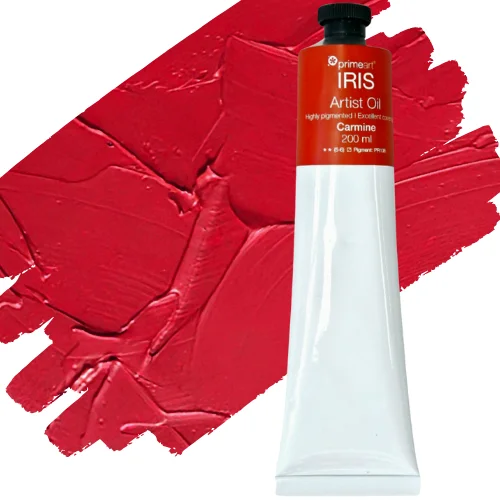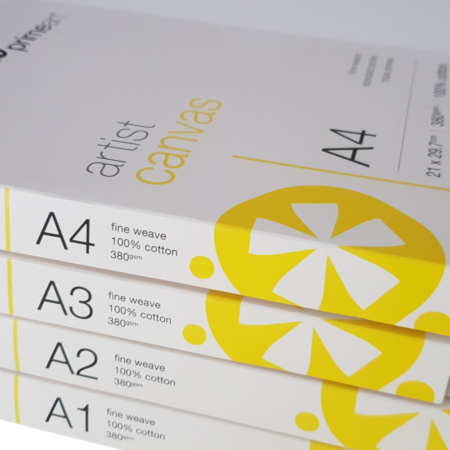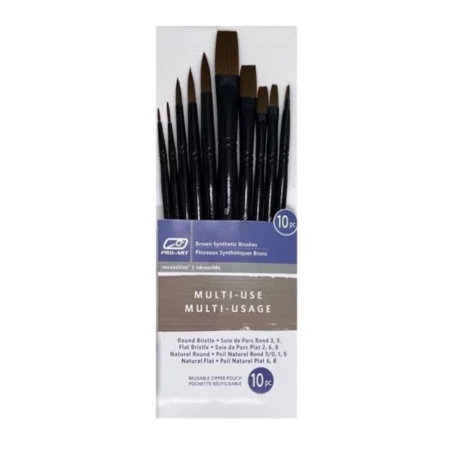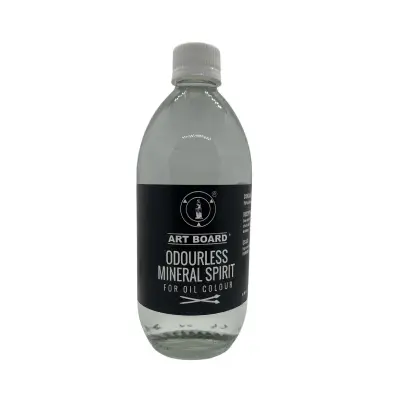Carmine Iris Oil Paint 200ml
R230.00
- IRIS Artist Oil Paints are made with quality pigments and refined linseed oil.
- These oils offer excellent coverage with a thick, buttery consistency that retains brushstrokes and palette knife marks.
- IRIS Artist Oils can be used directly from the tube or can be diluted for glazes.
- Lightfast and loaded with pigment, these artist oils offer colour consistency from wet to dry and will dry to a uniform gloss finish.
- The IRIS Oil palette offers a range of 24 vibrant, lightfast colours.
- This paint is highly pigmented, ensuring vivid results.
- Conveniently available in a 200ml tube.
- Excellent value for money.
Change the quantity above using the arrows (shown on hover) or manually input your desired amount.
IRIS Artist Oils are made with quality pigments and refined linseed oil. These oils offer excellent coverage with a thick, buttery consistency that retains brushstrokes and palette knife marks.
IRIS Artist Oils can be used directly from the tube or can be diluted for glazes.
Lightfast and loaded with pigment, these artist oils offer colour consistency from wet to dry and will dry to a uniform gloss finish.
The IRIS Oil palette offers a range of 24 vibrant, lightfast colours.
Oil Paint FAQ’s
So, how long does it take for oil paint to dry? Well, it’s kind of like watching paint dry, literally! Generally speaking, you’re looking at anywhere from 2 days to 2 weeks for it to dry to the touch. Why the big range? Well, different colours dry at different speeds, thanks to their pigments.
Can I mix oil paints with other types of paint? Nope, sorry, you can’t just go mixing oil paints with other types like acrylic or watercolour. It’s like trying to mix oil and water – they just don’t play nice together. There’s one exception though – water mixable oils. They’re designed to bend the rules a bit and can mingle with both oil and water-based paints.
What’s this about glazing in oil painting? Ah, glazing – it’s like adding a sheer layer of paint over a dried one. It’s great for tweaking colours without losing what’s underneath, and you can create some cool effects like light beams or shiny surfaces.
Why should I bother with oil paints? Well, for one, they’re slow to dry compared to acrylics, giving you more time to perfect your masterpiece. Plus, they’re champs at blending and creating those buttery smooth transitions that other paints envy.
Where can I slap on some oil paint? You’ve got options! Canvas, wood, paper – even some metals like aluminum and copper. Just make sure to prep your surface with gesso first.
What colours should I snag for oil painting adventures? Start with the basics: Titanium white, some blacks, blues, browns, yellows, reds, ochre – and don’t forget your greens! Mix ’em up or grab ready-made ones like sap green or permanent green.
Can I use regular cooking oils in my art? Nope, no can do bud. Regular cooking oils like veggie or peanut won’t dry or harden like the oils meant for painting. So unless you want your artwork to stay forever sticky, stick to the art store stuff.
How do I rescue my oil paint brushes from the mess? Easy-peasy! Wipe off the excess paint with a paper towel, then give ’em a bath in some odourless solvent or turpentine. Rinse and repeat until they’re squeaky clean, then let ’em air dry.
Alright, time to put the finishing touch on my masterpiece – how do I varnish it? Hold your horses! Let that painting sit for at least 6 months to dry properly. Once it’s ready, grab a wide, soft brush and apply the varnish in nice, even strokes. And remember, patience is key here! Rushing it could mean cracked varnish down the road.




